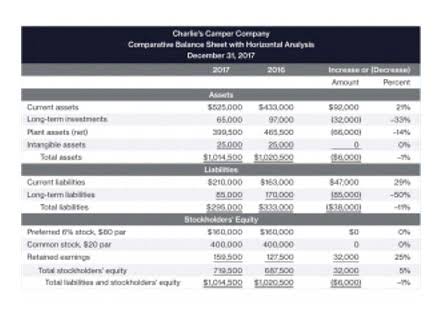
In conclusion, overhead and SGA expenses play distinct roles in a company’s financial management. While overhead costs are essential for the day-to-day operations of the business, SGA expenses are critical for driving sales and managing the overall business. Companies must carefully manage both types of expenses to ensure they are not negatively impacting profitability.
- Furthermore, these expenses can be used to compare your company to those of other companies operating in the same industry.
- We aim to be a hub for educational innovation, continually updating our offerings to reflect the latest advancements in technology and pedagogy.
- Operating expenses, or OPEX, cover everything a business spends to keep running.
- Companies must strike a balance between investing in SGA activities to drive sales and managing costs to maintain profitability.
- Reported separately from COGS and other operating expenses, companies can evaluate SG&A to assess the break-even or profitability points.
- Understanding the difference between SG&A and Cost of Goods Sold (COGS) is fundamental to grasp the economics of a business.
- In bigger companies, SG&A costs are split up on the income statement.
Register your business
As an operating expense, SG&A includes essential Debt to Asset Ratio expenses for a company’s day-to-day operations yet excludes COGS and any costs related to producing goods and services. Operating expenses (Opex) are the broader category of costs involved in running a business day-to-day. SG&A is a subset of Opex, specifically focusing on selling, general, and administrative costs. Opex also includes other expenses like research and development (R&D) and depreciation, which aren’t part of SG&A. A high SG&A expense ratio indicates a significant portion of revenue goes towards selling, general, and administrative costs. The specific percentage that constitutes “high” varies by industry, but generally, it suggests a company may be spending too much on overhead and not as efficiently as its peers.
SG&A: Selling, General, and Administrative Expenses

For analysts and investors, understanding these costs is critical in assessing a company’s ability to manage its expenses effectively and generate profit. High SG&A Expenses relative to revenue may sg&a meaning suggest inefficiencies and can impact a company’s profitability and attractiveness to investors. On a company’s income statement, SG&A Expenses are usually combined and reported as a single line item. They are subtracted from gross profit to arrive at operating profit.
- They’re part of the day-to-day operating costs that keep a firm in business.
- Selling, General & Administrative expenses are major drivers of operating income.
- Subtracting these costs from the gross margin gives you the net income.
- Larger firms tend to break down operating expenses into finer categories on their income statements.
- For example, reducing marketing and advertising costs might provide a short-term increase in profit, but it could also harm sales in the long term.
- This can make the gross profit margin and the operating profit margin appear to differ, even if the firms are financially identical otherwise.
- However, further analysis would be needed to determine if these costs are producing proportional benefits in sales or brand equity.
Statement of Cost of Goods Manufactured

Since SG&A is subtracted from gross profit to get operating income, this number CARES Act is critical in understanding a business’s overall efficiency. These are the everyday costs of keeping the business running, like rent, utilities, and office supplies. Paying the electricity bill or buying printer paper falls under general expenses.

What is Selling, General, & Administrative (SG&A)?
This can make the gross profit margin and the operating profit margin appear to differ, even if the firms are financially identical otherwise. Yes, salaries for employees such as executives, administrative staff, and other employees who are not salespeople are included in SG&A expenses. These costs are categorized as administrative expenditures and fall under the SG&A umbrella of expenses.

Selling, general, and administrative (SG&A) expenses commonly appear on income statements, either as a category of expenses or a single line item. Let’s explore SG&A expenses in more detail and the role they play in business operations. While reducing SG&A can boost profitability, there are risks in cutting too much or cutting the wrong areas. For example, slashing the marketing budget might reduce costs in the short term but could also result in fewer customers and lower revenue. Marketing is often an investment in future growth, so it’s essential to evaluate where cuts can be made without stalling business momentum.
- Remember, periodic reviews and adjustments to selling strategies are just as crucial for maintaining an edge in the competitive market.
- Selling, General, and Administrative (SG&A) expenses reflect the overhead costs a company incurs in its daily business operations.
- They can be wages for employees in support departments like accounting or human resources, as well as third-party costs like rent, legal fees, insurance, and office supplies.
- You can use your SG&A to gain insight into your operating expenses and analyze costs not directly tied to production (like administrative expenses).
- Let’s unpack this acronym to better understand what falls under each category.
How do I become a forensic science technician?
SG&A is a subset of operating expenses, which primarily covers costs related to selling, general, and administrative activities. By carefully analyzing SG&A expenses, companies can identify areas for improvement, enhance their operational efficiency, and ultimately achieve better financial performance. When analyzing the financial health and efficiency of a company, it’s important to monitor the SG&A expenses relative to sales revenue over time. A sudden spike in SG&A without a corresponding increase in revenue might indicate inefficiencies or other issues in operations.
Leave a Reply